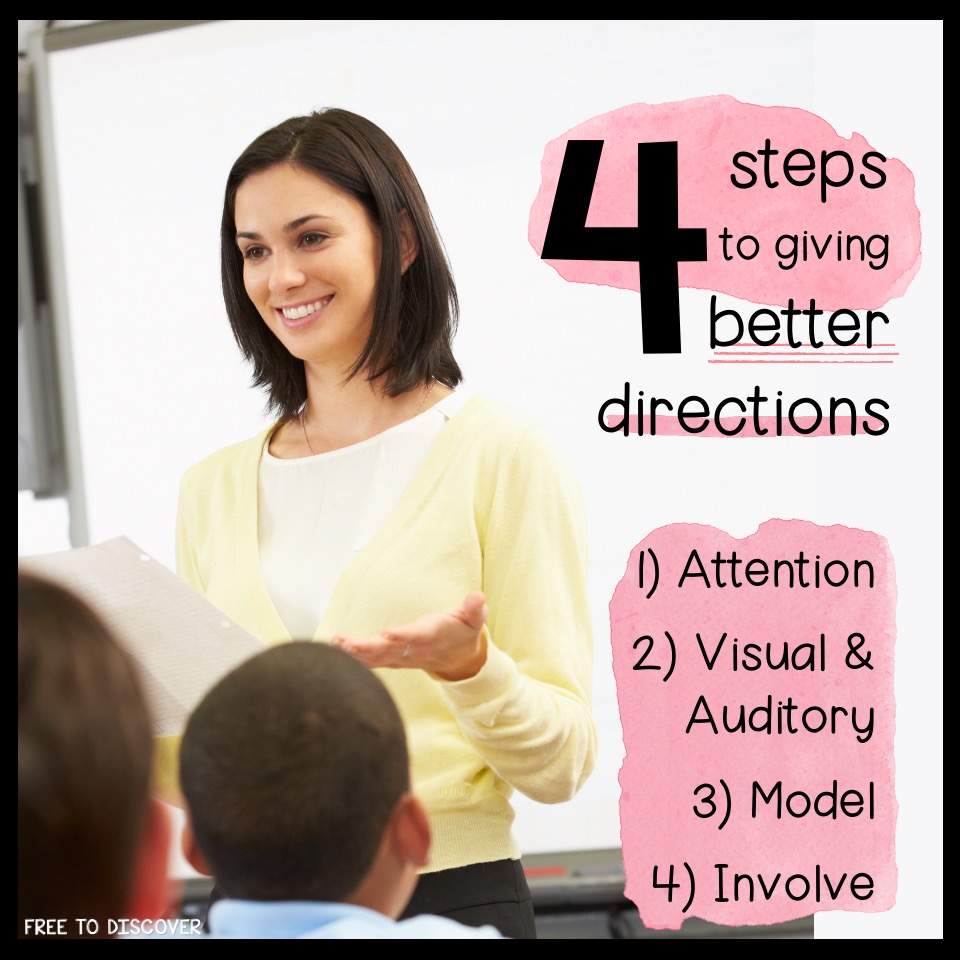
How to Teach Your Math Students to Follow Directions
You are not imagining that student attention is at an all-time low. As a result, it is more important than ever that you provide extremely clear directions to help students be successful. I can hear the moans and groans about this from across the internet, so bear with me! Imagine you are sitting in a faculty meeting. It's been a long day and you are not really interested in the topic. You're maybe even a little distracted by your teacher bestie who's making the best 'I'm bored' facial expressions ever. Next thing you know everyone around you starts regrouping and writing something down. What did you just miss?? Now, is it your fault? Probably. But we're also describing human nature and psychology here. The presenter needs to be extremely clear if asking others to follow directions. Fair enough? In this post, let's discuss how to teach your math students to follow directions in four easy steps.
Step 1: Get students' attention.
When you are giving directions in class, do you wait until all students are silent and looking at you? If students are talking, looking at their phones, or staring off into space it's no wonder they ask what they're supposed to be doing five minutes later. Slow down and wait. A quick "John, are you with me?" or "Casey, are you listening? This is important." will trigger students' brains to transition back to the teacher. You may need to wait in silence for seconds or even a minute. This wait time will decrease as students become familiar with the expectation. Only once you have the attention of all students should you begin to give directions on the activity you are introducing.
Step 2: Use visual and auditory cues.
With directions written on the front board, verbally share the directions with students while pointing out the written format as you speak. Using a combination of written and verbalized directions will increase the chance students will comprehend and apply the instructions to the task at hand. Having a visual list of steps gives students a place to focus their attention while you are sharing the information. As an alternative, students may have the directions written in front of them on paper.

Step 3: Model the task.
Once you have commanded attention and shared the directions using visual and auditory methods, model the activity by demonstrating how one should proceed. This is especially important when you are introducing a brand new activity type. For example, if you are assigning students a scavenger hunt, start at a station. Talk aloud as you work through the procedure, "First, I'll record the symbol and original problem. Next, I solve. The answer I got is X so I scan the room for that number. Found it! That's my next station." Show students exactly what you would like them to do.
Step 4: Require participation.
Finally, involve students by calling on them to explain parts of the directions. If directions are simple, call on 2-3 students to repeat the instructions. If there are multiple steps, call on one student per step. Hearing the directions from peers will help obtain additional attention from students.
This process involves lots of front-loaded work, but it will avoid frustration later because students will understand exactly what is expected of them. Of course you may still get a student or two who ask what they're supposed to do. But, at that point, your work is done! Direct them to read the directions on the board or ask a peer for assistance. Be consistent in your expectations and practice the expected behaviors often. By putting in the work at the beginning of the year, you will train your students and be able to enjoy a successful school year!
Join the Free to Discover community!
When you subscribe, you'll access our FREE monthly newsletter for secondary math students!

